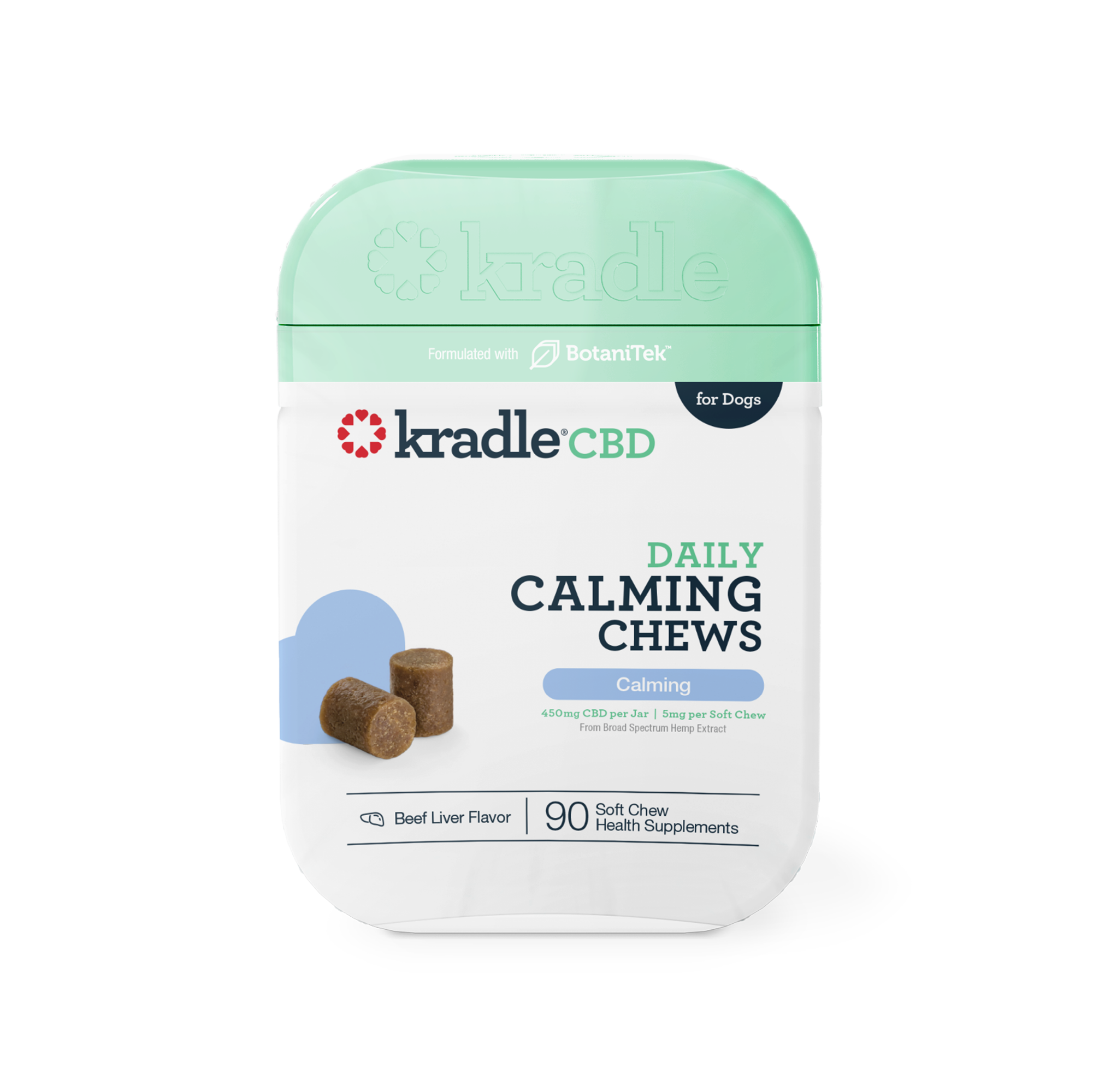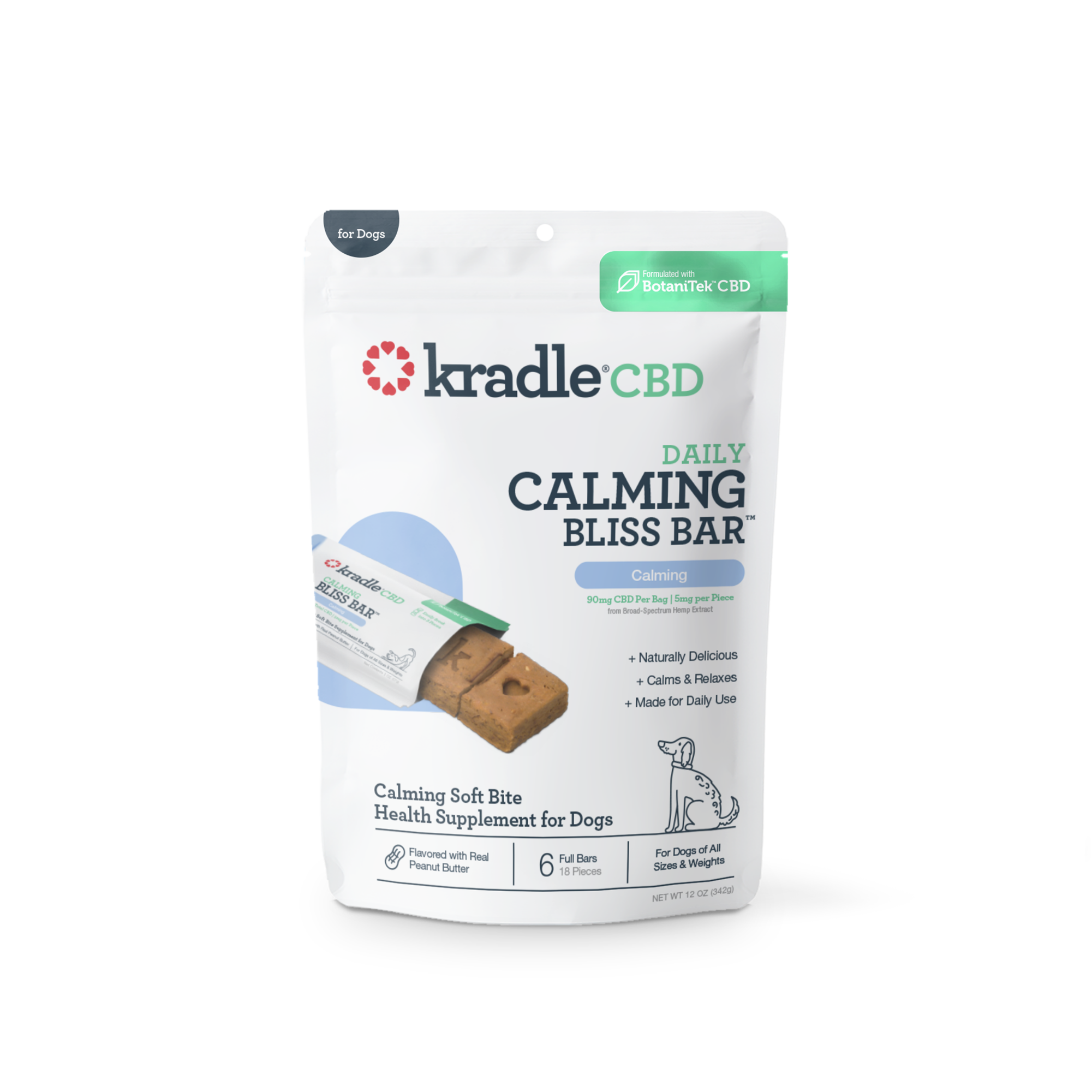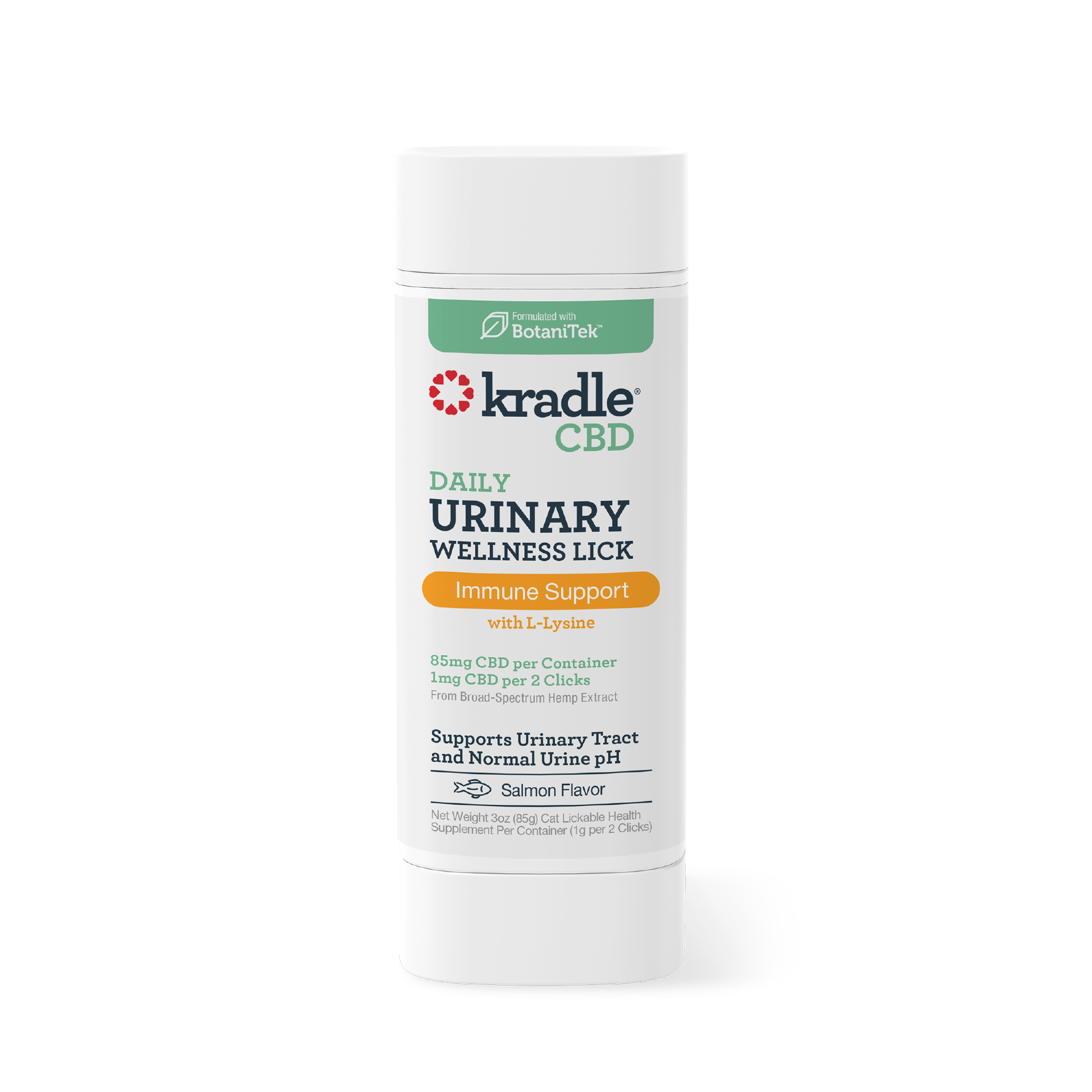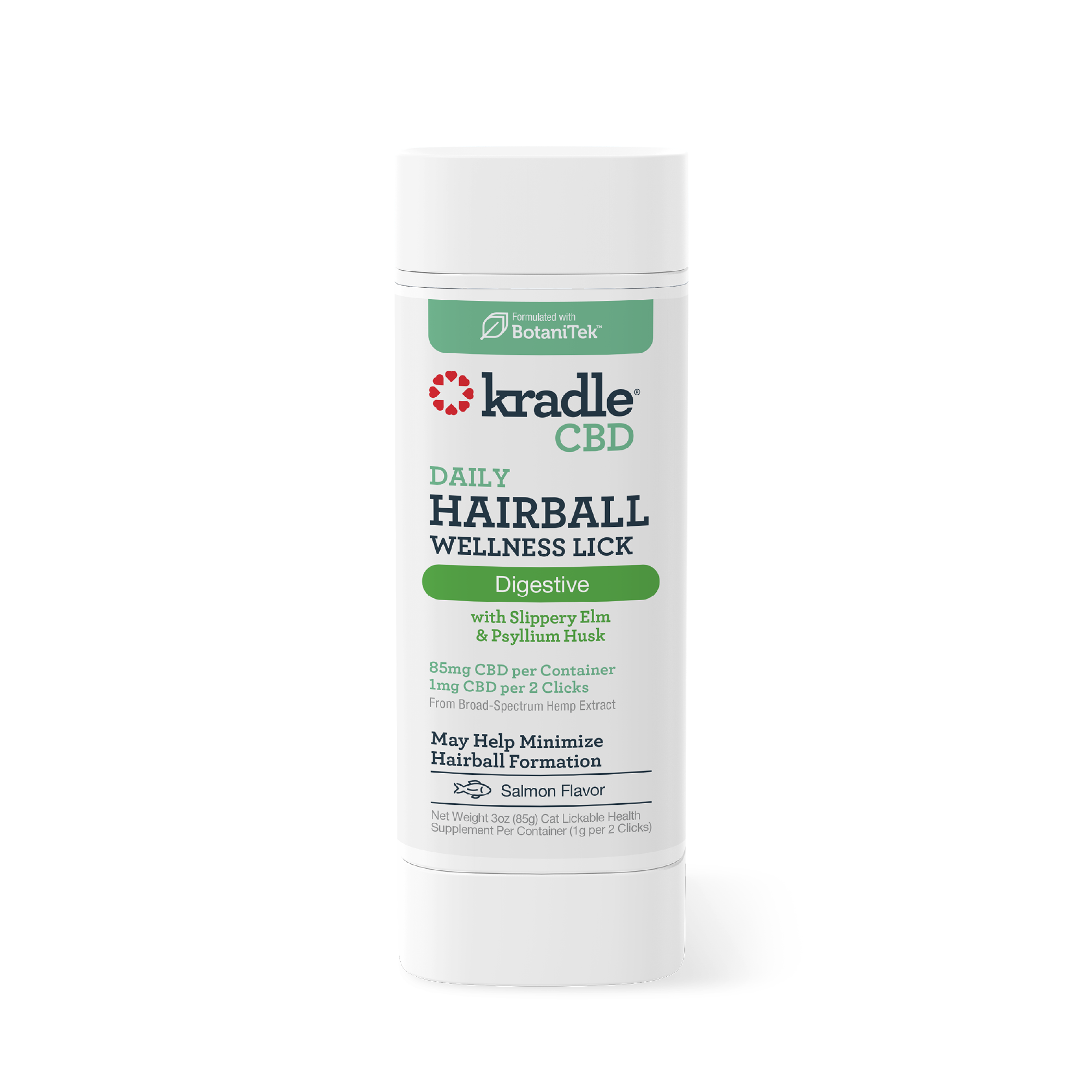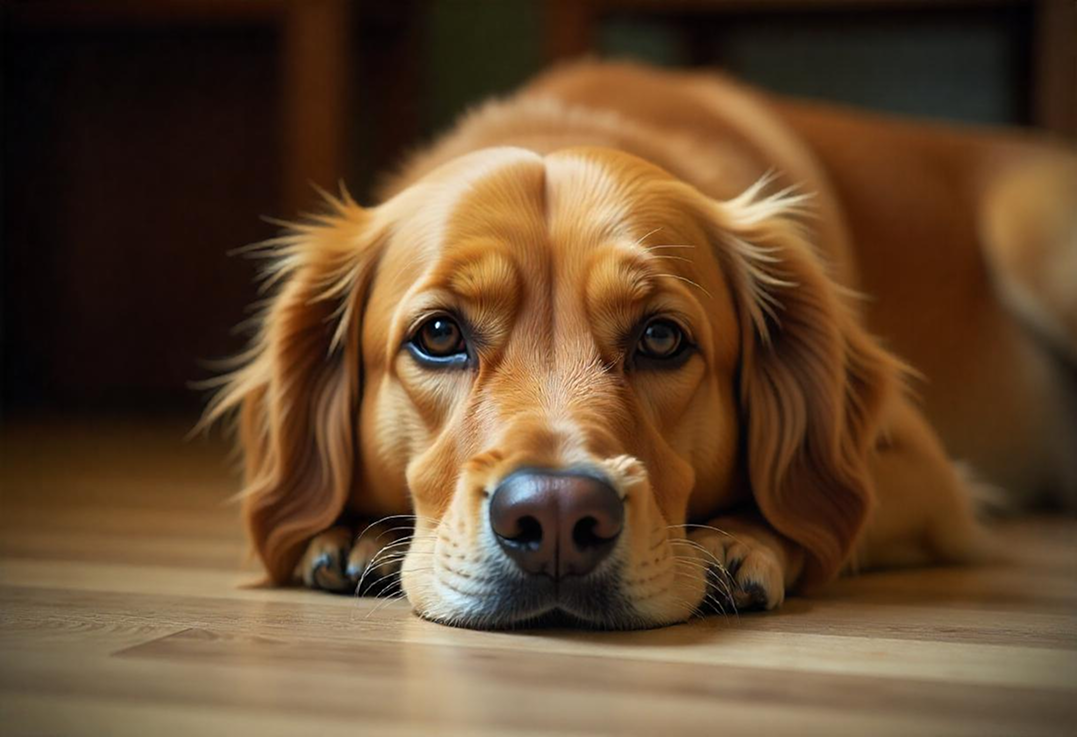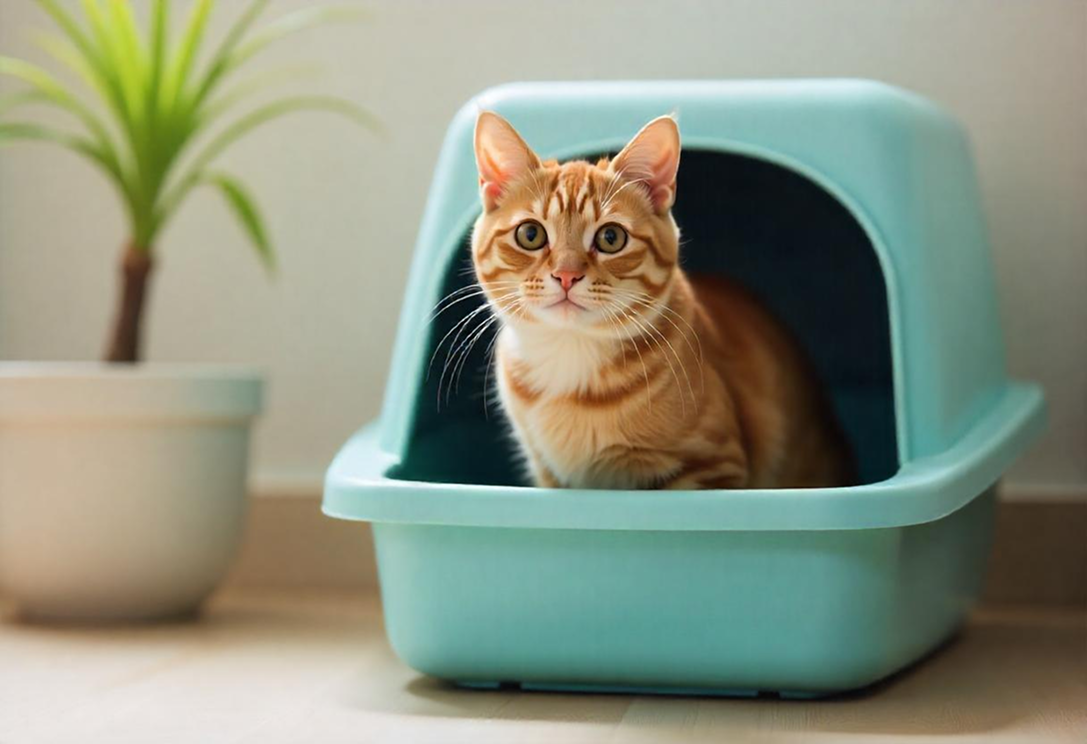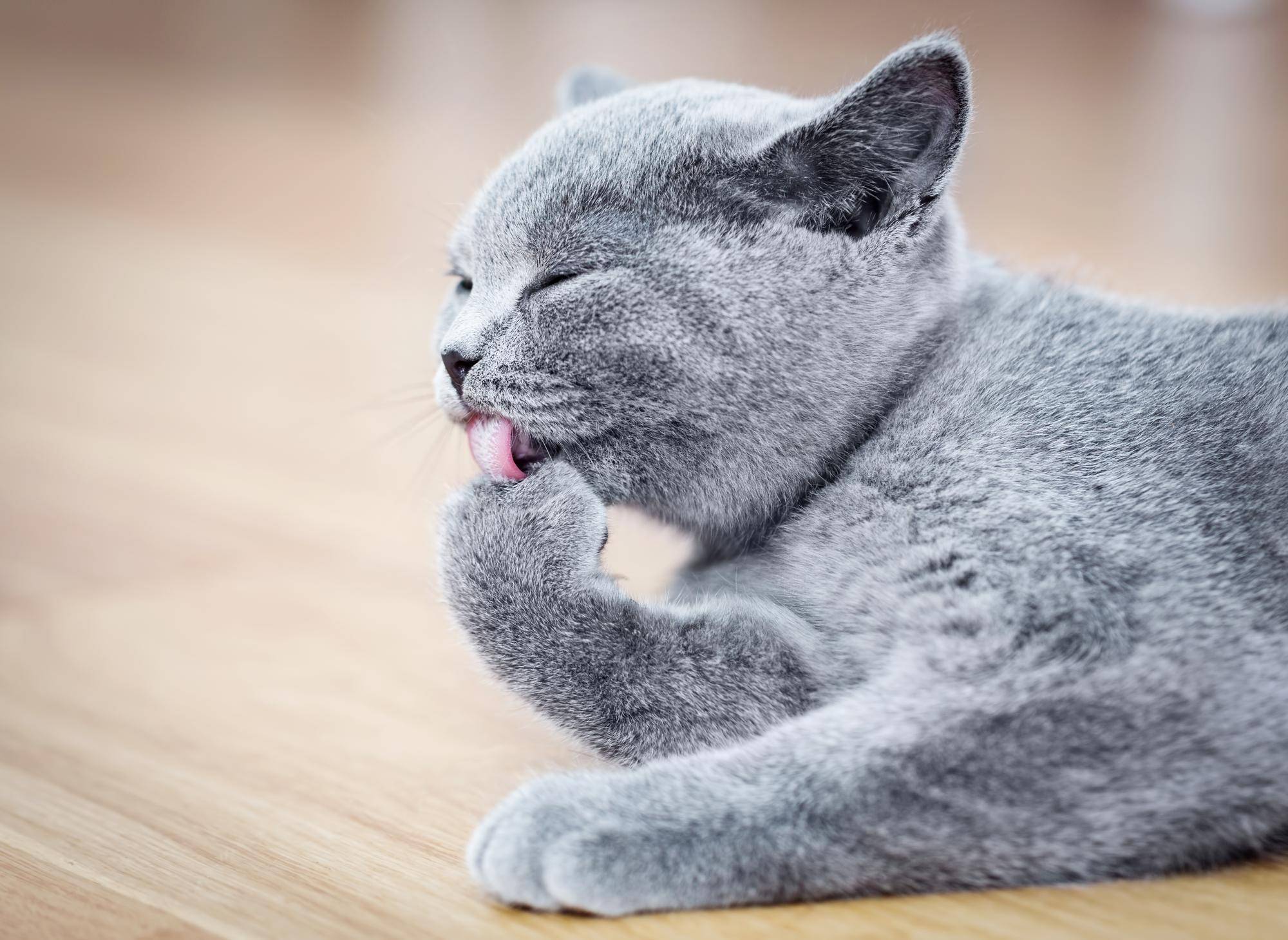
How to Help Your Cat with Hairballs
All cat parents know that sound when their fur baby is trying to solve their hairball problem by themselves. Hairballs are a common issue for cats, especially long-haired breeds. While they are usually harmless and caused by the cat cleansing itself, frequent hairballs can, at a minimum, be a nuisance to your cat, and in some cases indicate a more serious underlying issue.
If you have ever asked yourself how to help your cat with hairballs, you are in luck! In this article we will discuss what hairballs are, why they form, how to prevent them and some solutions such as Kradle’s CBD Cat Hairball Wellness Lick that can help both you and your cat manage hairballs better.
Understanding Hairballs: What Are They?
Hairballs are clumps of undigested hair that accumulate in a cat’s stomach. They form when a cat grooms itself and swallows loose fur. Normally, the fur passes through the digestive system and is excreted in the stool, but sometimes it stays in the stomach, forming a hairball.
Unlike the round balls their name suggests, hairballs are usually cylindrical because they travel up the esophagus. They often appear as wet, tubular masses of fur, sometimes mixed with food or bile.
People often ask how do I know if my cat has a hairball stuck? Common signs that your cat has a hairball include gagging and retching, vomiting, reduced appetite, constipation or straining in the litter box, lethargy or unusual behavior.

Factors Contributing to Hairballs in Cats
Lots of factors contribute to how cats get hair into their digestive tract and how well, or not well, they are able to manage it. Understanding these factors can help you proactively manage
1. Grooming habits and shedding
Cats naturally swallow loose fur when they groom themselves. Over-grooming due to stress, boredom, or skin irritation increases hair ingestion. This increase in grooming, especially when your cat is shedding, can increase their chances of developing a hairball.
2. Diet and nutrition
Low-fiber diets may not help hair pass through the digestive tract efficiently. Also, if your cat is picky about drinking water, dehydration can slow digestion, making it harder for hair to move through the system.
3. Age and breed
Both of these factors greatly contribute to hairballs in cats. Older cats tend to groom more and may have a weaker digestive system, leading to more hairballs. Long-haired breeds are more prone to hairballs due to their thick fur. Combine the two factors together, and you have the recipe for a sad kitty.
4. Health issues
Frequent hairballs might be the sign of an underlying health issue. Skin conditions (allergies, parasites) can cause excessive grooming and more hair ingestion, and gastrointestinal issues (like inflammatory bowel disease) may make it harder for the body to process fur.
Effective Ways to Prevent Hairballs
- Still wrestling with how to help with hairballs in cats? The good news is, while this isn’t the favorite topic for you or your cat, there are effective ways to help prevent or manage hairballs. Instead of worrying about what if my cat can't cough up a hairball, there are several great, proactive ways to help prevent them from happening in the first place.
- Groom regularly: Since it is hair that is getting inside your cat, brushing them daily will help remove loss fur before they swallow it. This is one of the most effective ways to prevent hairballs.
- Use the right tools: When brushing, it is important to use the right tools, like a de-shedding brush, to remove hair.
- Increase hydration: Ensure your cat always has access to clean water. You may want to use a water fountain, as many cats prefer running water which encourages drinking. If that doesn’t work, you can also add wet food or broth to their diets.
- Adjust their diet: Fiber-rich foods aid in digestion and hairball reduction. Some food formulas are designed specifically to help hair move through the digestive system and can be a good addition to your cat’s diet.
How CBD Products Can Help with Hairballs
CBD is gaining popularity as a natural supplement for pets, including cats. While it’s not a direct cure for hairballs, CBD can support overall health in ways that may reduce hairball formation and discomfort. First, CBD can help manage and reduce stress which may lead to less over-grooming. Some cats groom excessively due to anxiety and boredom, and the calming properties of CBD may reduce some of the compulsive grooming. Second, CBD supports digestive health by interacting with the endocannabinoid system, which plays a role in digestion. CBD may not be the magic cure for why is my cat struggling to vomit a hairball, but there is evidence that CBD may help as some pet owners report that CBD reduces vomiting and nausea.
CBD also has anti-inflammatory benefits and if a cat has underlying digestive issues (such as inflammatory bowel disease), CBD’s anti-inflammatory properties may help soothe irritation. In addition to reducing inflammation, CBD may stimulate appetite, encouraging cats to eat fiber-rich foods that aid digestion and drink water to aid in hydration.
If you are wondering how to help your cat with hairballs, there are some great CBD supplements available. Kradle’s CBD Cat Hairball Wellness Lick is a natural, unique lickable gel that combines CBD with Kradle’s BotaniTek™ Cat Digestive blend, featuring ingredients like coconut oil, psyllium husk, slippery elm, and wild Alaskan salmon oil, to soothe the digestive system, help support the removal of hairballs and promote healthy hairball elimination.

Conclusion
Occasional hairballs are a normal part of life for many cats, especially longer hair breeds. But, when hairballs become more frequent, it is important to know what can be done to prevent hairballs from occurring and what products exist to help your cat manage them and get back to purring!
FAQs
What are the signs that my cat’s hairball problem is serious?
- While an occasional hairball is normal, if your cat exhibits any of the follow it may be a sign of a more severe problem and is likely time to see a vet: repeatedly gagging or retching without expelling a hairball, vomiting frequently or stopping eating, persistent constipation or diarrhea, appearing weak, lethargic, or has a swollen belly, or shows signs of respiratory distress (wheezing, open-mouth breathing).
- A severe hairball blockage can be life-threatening and may require medical intervention, such as laxatives, endoscopy, or even surgery.
Can I use hairball licks?
- Yes! Hairball licks, such as Kradle’s CBD Cat Hairball Wellness Lick, are a common and effective way to help prevent and manage hairballs in cats. These products act as a lubricant, helping ingested hair pass smoothly through the digestive system instead of forming a blockage. These licks also include fiber to promote digestion and natural elimination of hair.
How does diet impact my cat’s hairball issue?
- Your cat’s diet plays a major role in reducing hairball formation and helping ingested fur pass through the digestive system.
- The right nutrition can improve digestion, minimize shedding, and support overall gut health. Simple things to remember are the importance of fiber in their diets and keeping your cat hydrated can help your cat manage hairballs.
How often should I groom my cat to reduce hairballs?
- The frequency of grooming depends on your cat’s coat type and shedding habits. Regular grooming will help remove loose fur before your cat swallows it, reducing hairballs.
- For short-hair cats, 2 to 3 times per week is recommended, with daily grooming recommended for long-haired cats or during high shedding periods.
What if my cat is trying to cough up a hairball but can’t?
- First, stay calm and watch your cat to see what they are experiencing. Second, offer them a hairball remedy, such as Kradle’s CBD Cat Hairball Wellness Lick, to help lubricate their digestive tract.
- Third, encourage them to drink water and stay hydrated. Last, you can gently massage their stomach to try and stimulate digestion. If you are concerned that the hairball has created a blockage, you should contact your vet immediately.
How do I tell if my cat has a hairball stuck?
- Signs of a more severe hairball problem include frequent vomiting, not having a bowel movement for over 48 hours, a swollen or painful abdomen, or wheezy breathing or choking.
- Monitor the situation and consult your vet if you suspect that a hairball is stuck and other measures have been unsuccessful in helping your cat pass the hairball.

